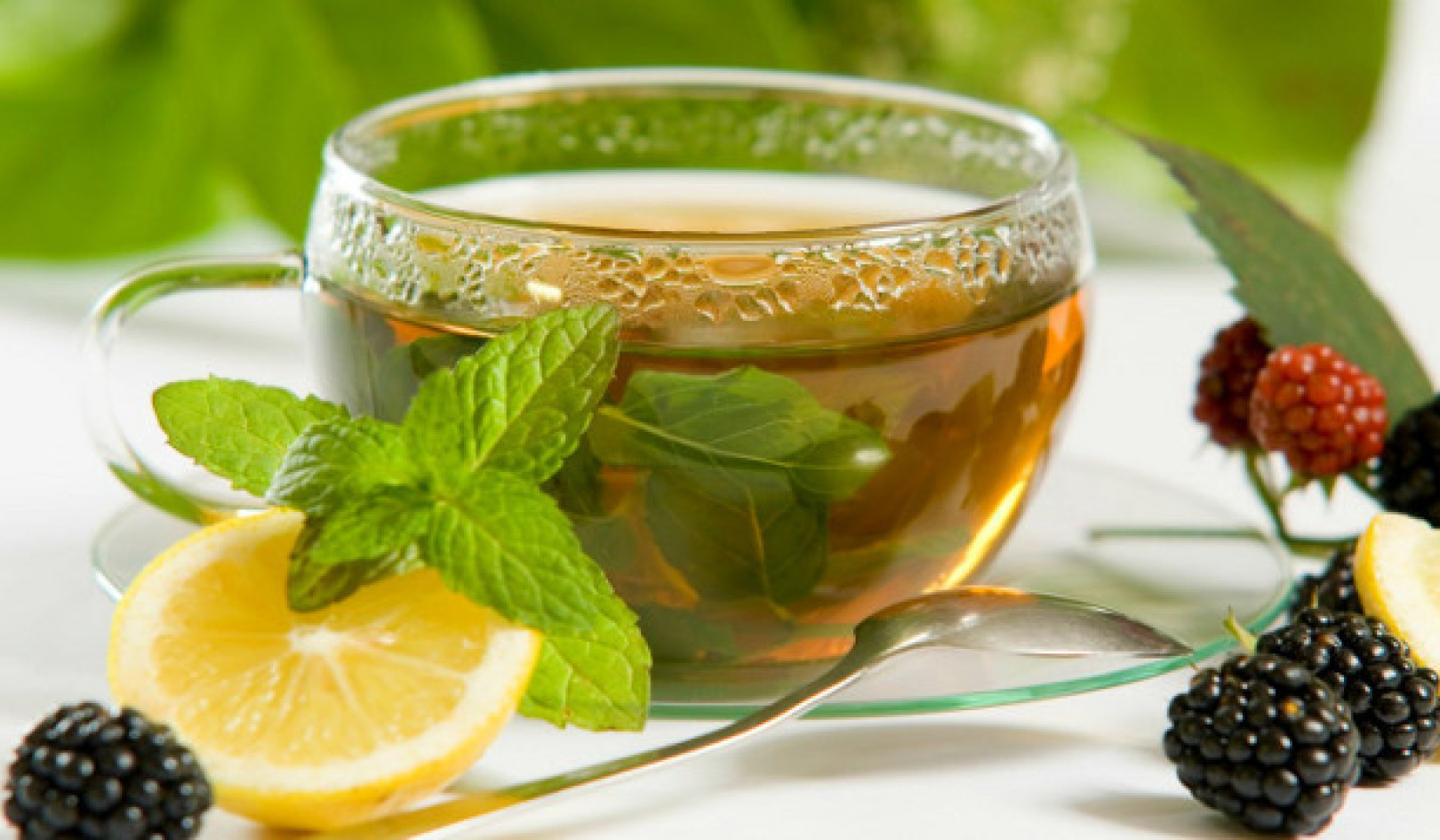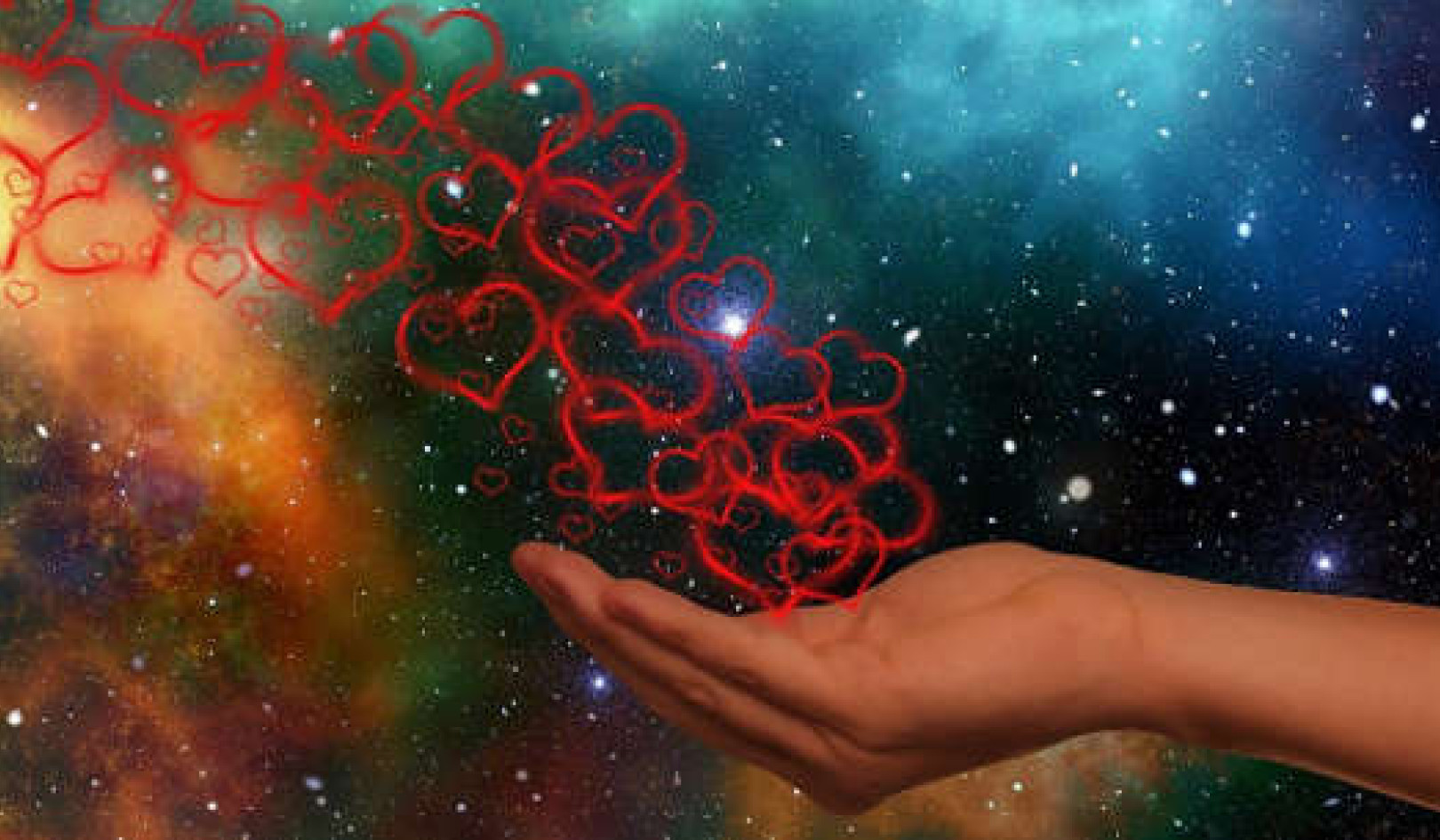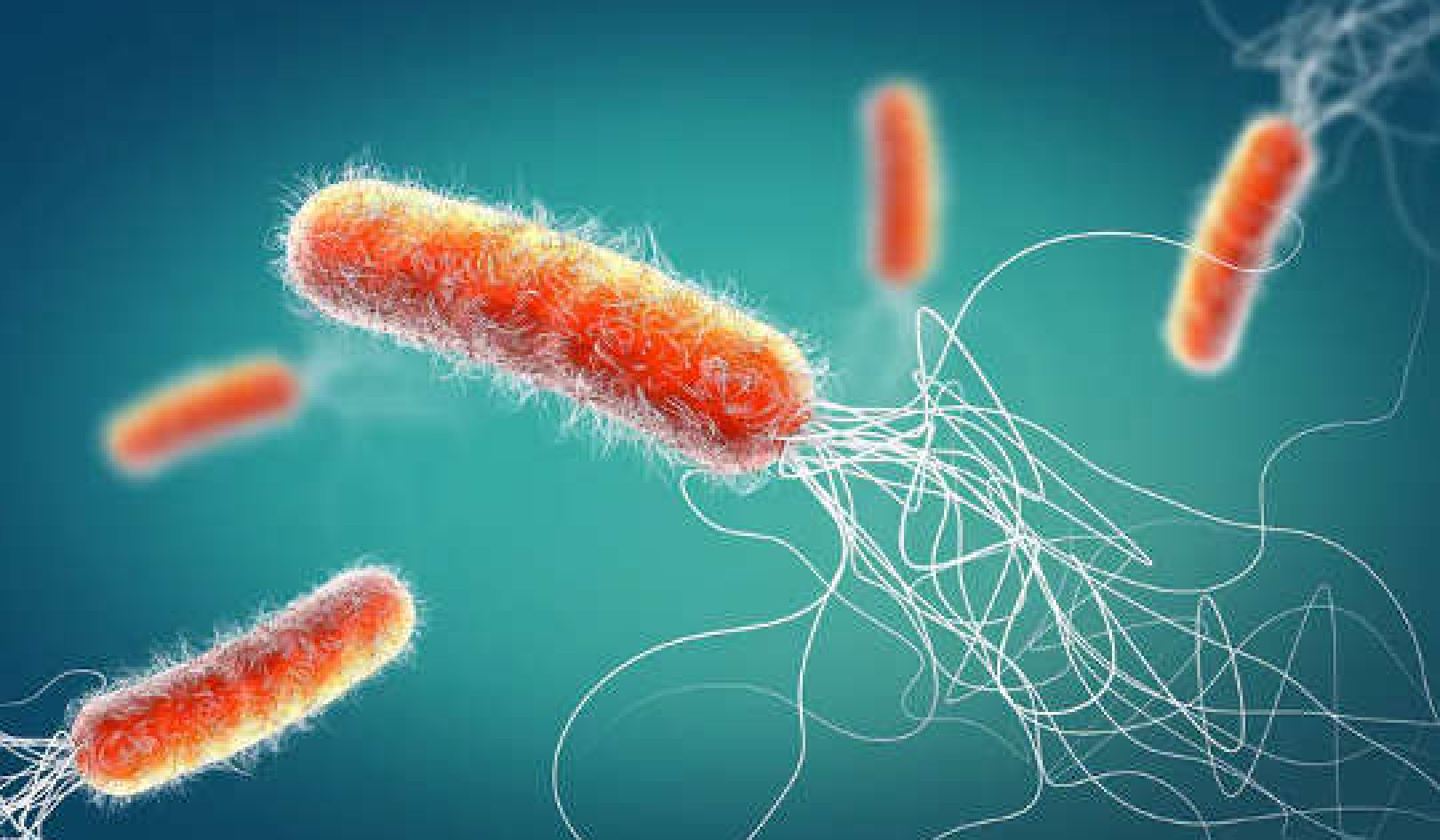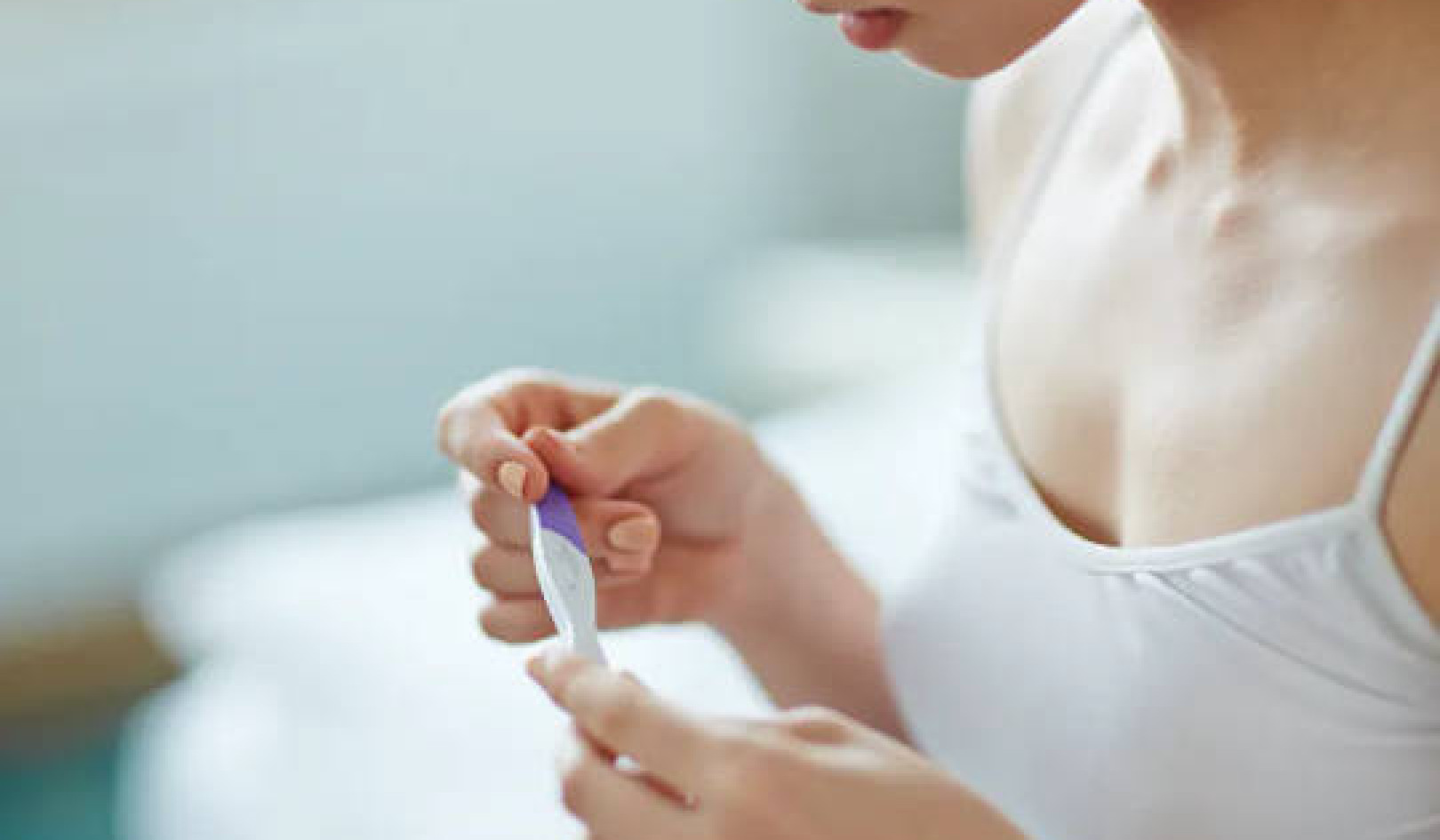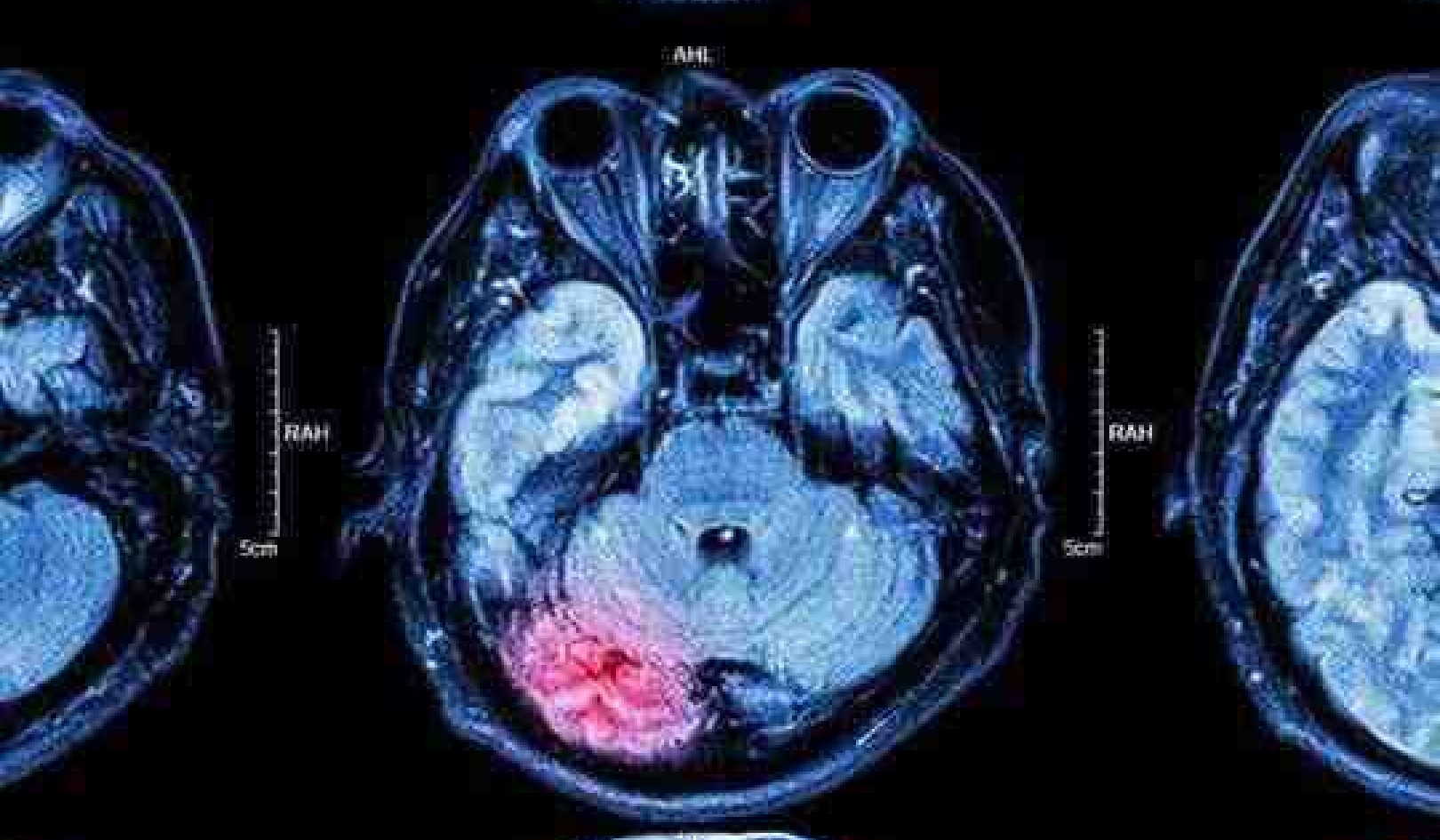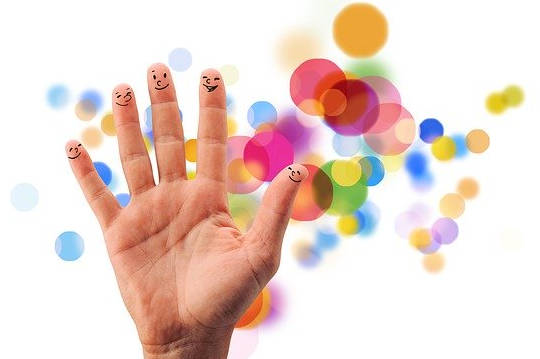
Image by Gerd Altmann
Sight is the most immediate of all the physical senses. We do not have to do anything other than open our eyes to experience an ever-changing kaleidoscope of light and color, which has a profound effect upon our well-being. While we make daily decisions about how to decorate our surroundings, we are often unaware of the impact they exert upon our physical and emotional states. Decades of research show that color influences our thoughts, our actions, our health, and even our relationships with others. Indeed, many color energies are so powerful that even the visually impaired can sense their vibrations and identify a color simply by "feeling" the density of the air that surrounds it.
Color therapy is an ancient approach to healing that has been used since the earliest of times. As with other holistic treatments, it aims to restore harmony and stimulate the patient's inner resources to aid the recovery of health, the fundamental belief being that illness develops from imbalances of energies at emotional, spiritual, or physical levels.
Treatment with color was probably first practiced by the ancient Egyptians, who shone sunlight through colored gems onto those who sought healing. The practice of healing through color is also known to have been adopted in ancient Greece, India, Tibet, and China, by the Mayans of Central America and the Native North Americans. (Even today, practitioners of Chinese medicine believe that colors have a profound effect upon health and that illness can be diagnosed through the color of certain parts of the body, including the tongue.)
However, as with herbalism, aromatherapy, and many other ancient healing arts, color therapy all but disappeared in the West. It was not until the eighteenth century that scientists and artists began to revive interest in the properties of light and color. Study has continued throughout the nineteenth and twentieth centuries, and the philosopher and educationalist Rudolf Steiner (1861-1925) developed some theories of color therapy that are widely accepted today. Although the effect of color in interior design is now well documented, little advice is available regarding our outdoor environment.
Get The Latest By Email
Color for healing
While some of the theory behind color therapy remains scientifically unproven, studies have demonstrated that colors can profoundly affect mood and often have a measurable effect on the emotional and physical behavior of human beings. The range of chronic and acute health issues treated by therapists is extensive and improvement is claimed in such conditions as migraine, asthma, eczema, depression, lethargy, the common cold, high and low blood pressure, arthritis, rheumatism, and many mental and emotional problems. Color treatment has been found to be especially useful in stress-related disorders such as eczema and mild depression. It is particularly valuable when it is used to support other therapies and is often practiced alongside conventional medicine.
Our psychological response plays a vital role in color healing, many colors having powerful emotional and spiritual undertones as well as physical implications. Throughout our lives we attach feelings, memories, and meanings to our experience of color, and these associations build up our personal color preferences. Many of us have strong leanings toward certain colors, and the origins of these favorite and disliked colors are considered very important in healing; therapists often find we avoid a much-needed color simply because of its unpleasant past associations. Although, personal taste is significant, it does appear that most people prefer colors in the so-called "universal' order" of blue, red, green, violet, yellow, orange. However, underlying preferences can also be affected by the influences of fashion.
Color therapists initially analyze a patient through a variety of techniques to diagnose whether he or she is "off-color." Illness is seen as a lack of one or more colors within the body, where each color has specific characteristics and effects. Although invisible to most people, every natural being is surrounded by an energy field which can be seen as an enveloping aura. The aura is a continually moving and pulsing entity, holding life energy and reflecting physical and mental state. In a healthy person, all the colors of the spectrum are visible, from red nearest the body through to the outer band of magenta. This same life force also shines through the chakras -- energy centers within the body that are closely linked to the function of internal organs and systems.
Mental, physical and, emotional trauma is reflected by imbalances within the aura, which color therapists seek to harmonize by the application of missing color(s). In this way, healing is encouraged before subtle instabilities manifest as more serious illness. Every color contains energy of a certain vibration, and each organ in the body is linked with a corresponding color; controlled exposure to an appropriate color can therefore correct or enhance the body's energy flow. Extremes of emotion, which we all acknowledge when we use phrases like "green with envy," are often the outward display of imbalances or blockages in the flow of color energies into and out of the body.
Different colors affect the amount and type of light that falls on us. Color, in the form of light energy, enters not only through the eyes, but also the skin, which we do not consciously register. It permeates through the aura, triggering chemical and hormonal changes within the body that affect health and well being. Exposure to certain colors can therefore adjust our intake of light energy, in order to balance the body. Even the colorblind or the visually impaired can be healed with color, as the treatment does not have to be seen.
Imbalances are corrected through a variety of techniques, exposure to the color or colors lasting approximately twenty minutes. Patients may be treated with special lamps, crystals, colored silks, colorful food or liquids, or through the use of colored oils for massage. Any treatment is enhanced by total relaxation. Taking the garden as our healing environment, we shall examine suitable techniques to adopt outdoors.
SAD (Seasonal Affective Disorder) is linked with the widespread use of artificial lighting throughout winter; such light has none of the variety of natural light and deprives us of certain color energies.
Red for Vitality
Red is the color of love and fertility and is a great energizer. It keeps you alert, helps you cope with the demands of life, removes negativity, and provides courage. Representing strength of will, with a drive that pushes you on to greater things, its energy is a useful pick-me-up if you are depressed or tired, and it can rescue you from the brink of hopelessness. Some, however, may find it too stimulating when they are under pressure and it can aggravate stress, causing anger to surface.
Along with blue, red is the color most often chosen in color preference tests. However, a dislike of red is fairly common, and this is often characteristic of someone who has been frustrated or defeated.
Many people find pink more comfortable than bright red; this may demonstrate a lack of courage. Pink is also chosen by those seeking affection, and has the ability to engender unconditional love. It is also helpful to those suffering from grief, since it protects and brings peace of mind.
Exposure to red causes measurable reactions in the body. Blood pressure, temperature, and energy levels are raised, circulation improves, and breathing, pulse rate and brainwave action quickens. These are only temporary effects and quickly die down when the color is withdrawn. Red strengthens the blood and therefore helps treat anemia. It is also a detoxifier, removing debris from both the psyche and the body, and will help to fight off infection. Red raises comfort levels, making cold areas feel a few degrees warmer than they actually are, so it is a very useful color for those who catch colds easily or who need warmth. It is a real support when you feel sluggish or apathetic, providing physical and mental energy. An arousing color, it is not suitable for the treatment of anxiety or emotional disturbance.
Red is the color of the base chakra, the energy center within the body that is associated with the lower trunk and reproductive organs. For this reason, it is believed to be helpful in the treatment of genital problems and issues of sexuality or infertility. It can also ease stiff limbs, particularly the legs.
Red plants -- Complementary color: green
In spring and summer, temporary bursts of red may be provided by pansies, nasturtium, pelargoniums, salvias, verbena or impatiens. The list of flowering plants is supplemented by those whose leaves, bark, berries, and bare stems bring splashes of red into the garden in the fall and winter.
Orange for optimism
Orange is primarily the color of joy; exposure to it promotes a feeling of wellbeing by providing a release from the everyday worries of life. Warm and welcoming, optimistic and sociable, it is bursting with earthly energy and will act as a stimulant to those in its presence, albeit with a gentler effect than that of red. Orange provokes change, creates opportunity, and is the color of activity, enthusiasm, and freedom. It deals with dormant conditions by bringing them into the open so they can be sorted out and properly laid to rest. It is a good color for putting your life back together again when grieving, divorced, or in shock, and it is often used for mental breakdowns or suicidal feelings. If used appropriately, its healing properties may be harnessed to lift the spirits, combat depression, and fight unknown fears.
Preferred by the quick-witted and talkative, orange is also a color often chosen in tests by those suffering from mental or physical exhaustion, perhaps signifying a subconscious desire for a less stressful life. Orange is a popular color with children and it is used in classrooms for younger children in Steiner schools, where it is believed to encourage both resourcefulness and independence, while also improving social behavior by lessening hostility and irritability.
Orange is the color of the sacral chakra, the energy center within the body that is associated with the adrenal glands, the lower intestines, the abdomen, kidneys, and bladder. Orange improves intestinal disorders and bowel disturbance and also helps to increase the appetite, since it is associated with the assimilation of food. It is thought to be a good aid to the menopause (both male and female) as it balances the hormones. Orange may also be used in the treatment of the following: arthritis, asthma, bronchitis, catarrh, fibroids, gallstones, hip problems, impotence, infertility, knee problems, muscle cramps or spasms, underactive thyroid.
Orange plants Complementary color: blue
To enhance the effect throughout the year, gaps in permanent garden plantings may be filled by pansies, ranunculus, gazania, nasturtium, marigolds, mimulus, or zinnia. After the flowers of spring and summer and the berries of autumn, the bark of certain trees remains orange throughout the winter.
Yellow for contentment
Yellow, the brightest color in the spectrum, represents the power of the sun. A great aid to concentration and study, yellow energy provides intellectual and inspirational stimulation, encourages agility of mind, aids precision of thought and absorption of facts, and helps to sort out difficulties. However, some color therapists believe an excess of yellow may be too stressful a stimulant and that it should be used with caution. Yellow is also a useful color for the shy or the lonely since it brings feelings of optimism and self-worth and lifts depression. It encourages detachment and allows you to stand back from a situation and think your own way through it.
Often selected by intelligent people who like innovation, yellow is also liked by the mentally handicapped. Those who dislike yellow often feel isolated or have suffered disappointment.
Its energy is a powerful eliminator, purging waste from the body and toning and cleansing the entire system. This is not only of physical benefit but also applies to emotional baggage, since holistic medicine believes that illness often stems from the stress of holding on to unresolved situations and not letting go of old problems.
The solar plexus is governed by yellow and also the liver, pancreas, gall bladder, spleen, and middle stomach; therefore yellow is of general benefit to the digestive system. Used for weight control, it helps to maintain a correct balance of liquids in the body, alleviating water retention. It also works on the skin and can benefit the treatment of eczema and psoriasis. Yellow seems to prevent calcium accumulating in the joints of older people, which eases arthritis and rheumatism. It provides a boost to the nervous system, keeping the nerves strong and generating muscle energy.
The following may also respond to yellow energy: allergies, cellulite, high blood cholesterol levels, poor circulation, constipation, cystitis, depression, diabetes, ear problems and tinnitus, hair loss, myalgic encephalomyelitis (ME), and even leukemia and stroke (the latter should be undertaken in conjunction with conventional treatment).
Yellow plants Complementary color: violet
Annuals which will enhance the effect throughout the year include pansies, primroses, wallflowers, ranunculus, snapdragons, marigolds, marguerites, nasturtium. After spring and summer flowers, many plants have yellow berries and bark for autumn and winter color.
Green for growth
Green is the color of nature, a balanced hue which is neither warming nor cooling and brings harmony to all in its presence. The greenness of young seedlings is a powerful image in all societies and represents regeneration and fertility. For this reason, green is believed to bring about change, create new routes in life, and encourage hope. Restful and relaxing, it offers sanctuary from the outside world and engenders a feeling of peace. It is appropriate for meditation as it encourages a purposeful state of mind. In excess, however, green may slow down movement and lead to indecision.
Often preferred by the civilized and conventional who are well adjusted, it is rejected by the lonely or those with a degree of mental disturbance.
Green acts as a general tonic and detoxifier, balancing all the energies of body, mind, and spirit, soothing muscles, stabilizing nerves, and relieving mental stress. It is useful in the treatment of claustrophobia, and its calming influence soothes headaches and controls blood pressure and nerves; it may be used to good effect with hyperactive children.
Green governs the heart chakra, the energy center in the body that represents the chest, shoulders, and lower lungs. It is therefore used to treat ailments of the heart -- both physical, such as angina, and emotional. It can help to dispel negative feelings and calm and cool the emotions.
The following conditions may also respond to treatment with green: bingeing, colds, gout, hepatitis, jaundice and other liver complaints, cancer, and Parkinson's disease (only in conjunction with conventional medicine), shingles, stomach problems (including ulcers, indigestion, nausea, travel sickness), yeast infections.
Green plants Complementary color: red
Obviously most garden plants will be suitable for this section because of their foliage; a few plants also produce green flowers. If you wish to use a plant that you consider suitable but which produces brightly colored flowers at some stage, simply cut them off to retain the essential "greenness."
Blue for the spirit
Blue is an ideal color for places of healing, since it encourages relaxation and tranquility. It is a good color for contemplation and is very conducive to meditation, inspiring patience and calm thought. Blue makes you aware of the need for rest and allows you to make space in your life. It denotes a desire for peace and order and is the color of the present time -- the Age of Aquarius.
Blue is often the first choice in color preference tests and tends to be chosen by conservative, accomplished, deliberate, and successful people. It is often rejected by those who are anxious or harbor a sense of failure.
Although very variable, it is always a cold hue and has a cooling and cleansing effect that quiets the mind and soul. Tests have shown that exposure to blue has a calming influence that reduces blood pressure, pulse rate, and brainwave activity -- interestingly, this is also noticeable with exposure to violet (which combines blue and red). Blue is the color for modern-day stress and anxiety; its calming influence will relieve insomnia and combat nervousness, tension, or fear. It encourages exhalation and so is very helpful in cases of asthma where it can ease symptoms of breathlessness. Inflammation and fever will be cooled and heart palpitations eased in its presence.
Blue represents the throat chakra, the energy center within the body that is linked to the throat, upper lungs, arms, and base of the skull. It is useful in the treatment of conditions such as overactive thyroid, hiccups, stuttering, gum problems, stiff necks, sore throats, tonsillitis and, particularly, childhood ailments such as teething or speech problems. Some stomach conditions may also be alleviated, including colic, colitis, and stomach ulcers.
Blue plants Complementary color: orange
There are many blue plants that provide added color on a seasonal basis, including pansies, lobelia, petunia, love-in-the-mist, Swan River daisy, larkspur, morning glory. Besides those listed for their flowers, many plants, such as hostas, have glaucous or bluish foliage.
Violet for inner calm
Violet is a rich, regal color that bas been used throughout history to indicate knowledge, self-respect, spirituality, nostalgia, dignity, and wealth. Violet brings feelings of self-worth and is a good color to use if you need to learn to love yourself.
Not generally a popular color, it tends to be preferred by temperamental or sensitive people with a liking for the arts and philosophical debate. A preference for violet may also be held by someone hoping to fulfill their inner desires. It is often disliked by people who bate pretence and by those who avoid close relationships.
Violet is the color of the brow or crown chakra, the energy center within the body that is closely linked to the "third eye", which is said to be the center of creative visualization. It is, therefore, a useful color for gaining inspiration or insight into oneself and is said to enhance psychic perception; it is very conducive to meditation. It contains a potent yet balanced vibrational energy that can purify thoughts and feelings; creative people often relate well to violet and find inspiration through it.
Since it is linked to the head, color therapists use Violet to treat a range of mental disorders such as schizophrenia, the early stages of Alzheimer's disease, and concussion. It may also ease such conditions as sciatica, skin eruptions, sore eyes, complaints of the nervous system, and scalp problems including dandruff. Violet also induces sleep, calms a jangled nervous system, placates emotional upset, and may he used to subdue heart palpitations. It does, however, need to be handled with care as in excess it can be depressing or lead to feelings of isolation. It should not he used if there is a history of depression, nor in the treatment of young children.
With the Shortest wavelength in the spectrum, beyond it lies only ultraviolet, which the human eye cannot see. Ultraviolet light is, however, detected by many insects. Some flowers have developed special patterns that are visible only under ultraviolet light, in order to entice pollinating insects.
Violet plants Complementary color: yellow
A number of annuals can provide seasonal highlights, including pansies, petunia, ageratum, larkspur, verbena, sweet peas. The plants listed are mainly of interest for their flowers, but some have striking, purple-hued leaves.
Reprinted with permission of the publisher,
Willow Creek Press. ©1998. www.willowcreekpress.com
Article Source
Healing Gardens
by Romy Rawlings.
 Our own gardens, regardless of size, should provide a welcome sanctuary for relaxation from the pressures of the outside world. When carefully planned, the garden can even make a positive contribution to a healthier and happier life. Healing Gardens beautifully demonstrates how alternative therapies such as meditation, aromatherapy, feng shui and color therapy can be put into practice in the home garden for mazimum results. The helpfull narrative explores personal needs for revitalization and offers solutions to a range of health problems, including asthma, hay fever and stress. Comprehensive plant lists are provided for each of the suggested therapies, with expert advice on selection of species, growing and healing uses. Lavish color photographs and artwork illustrate the principles of garden design, planting and ornaments. Whether you have a country garden or a city terrace - or even a window box - this book shows in exquisite detail how you can maximize the hea! ling potential of your garden environment.
Our own gardens, regardless of size, should provide a welcome sanctuary for relaxation from the pressures of the outside world. When carefully planned, the garden can even make a positive contribution to a healthier and happier life. Healing Gardens beautifully demonstrates how alternative therapies such as meditation, aromatherapy, feng shui and color therapy can be put into practice in the home garden for mazimum results. The helpfull narrative explores personal needs for revitalization and offers solutions to a range of health problems, including asthma, hay fever and stress. Comprehensive plant lists are provided for each of the suggested therapies, with expert advice on selection of species, growing and healing uses. Lavish color photographs and artwork illustrate the principles of garden design, planting and ornaments. Whether you have a country garden or a city terrace - or even a window box - this book shows in exquisite detail how you can maximize the hea! ling potential of your garden environment.
Info/Order this book.
About the Author
Romy Rawlings is a landscape architect and garden designer with her own practice in Warwickshire, England. She has a strong personal belief in complementary medicine and has extensively studied the application of alternative therapies in practical garden situations.



